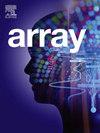Risk assessment and physical hazard detection in elderly living environments using multi-scale infrared and visible imagery fusion
IF 2.3
Q2 COMPUTER SCIENCE, THEORY & METHODS
引用次数: 0
Abstract
With the rapid growth of the elderly population, smart elderly care has become a crucial solution to address this societal challenge, with safety concerns being paramount. Existing research often focuses on fall detection and localization, but overlooks the comprehensive identification of hazards in home environments. This work proposes a preventive hazard detection and safety assessment paradigm based on infrared visible dual-mode fusion, aiming to identify various potential hazards, including the risk of falling, and achieve a paradigm shift from “post response” to “pre prevention”. The model is designed with a channel space dual attention Transformer and a multi-scale adaptive fusion module, which improves the accuracy of hazard detection under different lighting conditions. Experimental results show a 15% improvement in detection accuracy over single-modality images on a custom-collected dataset. Compared to state-of-the-art methods such as DATFuse, IPLF, and Res2Fusion, our approach improves the mean Average Precision by 10%, with higher precision and recall in complex environments. Additionally, a Bayesian-optimized lightweight CNN achieves a 30% reduction in model size while maintaining high accuracy, making it suitable for deployment on resource-constrained devices. This study provides a robust tool for enhancing elderly safety in home environments and establishes a solid foundation for future research in smart elderly care.
基于多尺度红外与可见光图像融合的老年人生活环境风险评估与物理危害检测
随着老年人口的快速增长,智能老年护理已成为应对这一社会挑战的关键解决方案,其中安全问题最为重要。现有的研究往往侧重于跌倒检测和定位,但忽视了家庭环境中危害的全面识别。本文提出了一种基于红外可见双模融合的预防性危害检测与安全评估范式,旨在识别包括坠落风险在内的各种潜在危害,实现从“后响应”到“前预防”的范式转变。该模型设计了通道空间双注意转换器和多尺度自适应融合模块,提高了不同光照条件下的危害检测精度。实验结果表明,在自定义收集的数据集上,与单模态图像相比,检测精度提高了15%。与最先进的方法(如DATFuse, IPLF和Res2Fusion)相比,我们的方法将平均平均精度提高了10%,在复杂环境中具有更高的精度和召回率。此外,贝叶斯优化的轻量级CNN在保持高精度的同时实现了模型尺寸减少30%,使其适合部署在资源受限的设备上。本研究为提高居家环境中老年人的安全提供了有力的工具,并为未来智慧养老的研究奠定了坚实的基础。
本文章由计算机程序翻译,如有差异,请以英文原文为准。
求助全文
约1分钟内获得全文
求助全文

 求助内容:
求助内容: 应助结果提醒方式:
应助结果提醒方式:


